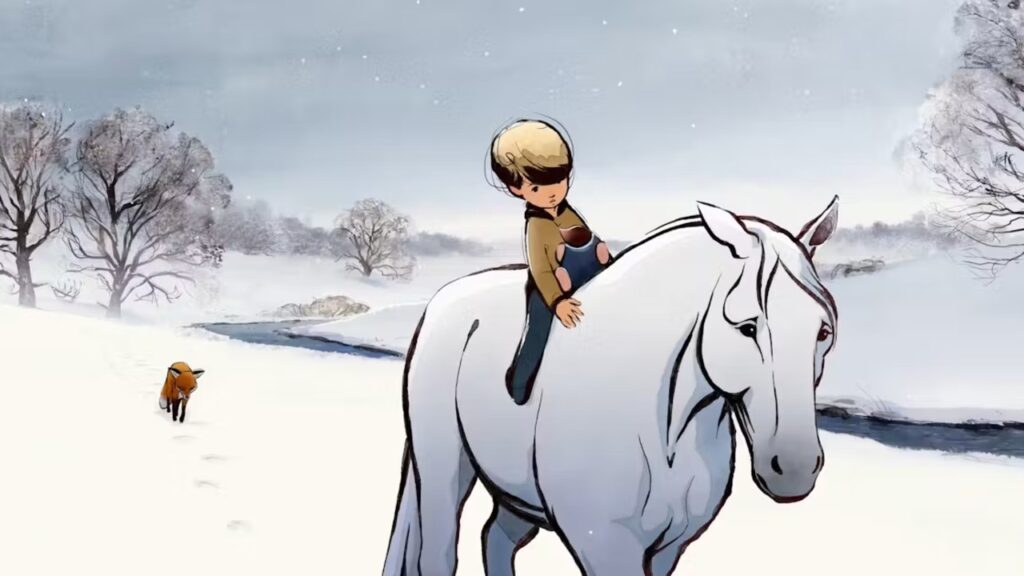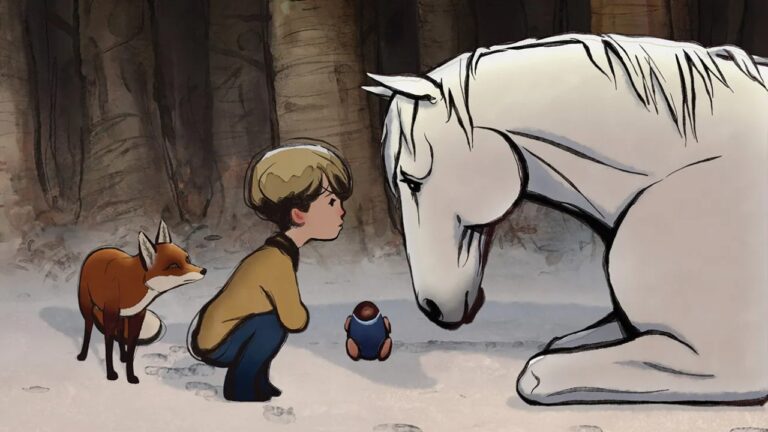When ‘The Boy, the Mole, the Fox and the Horse‘ was released in 2022, it arrived as a quiet response to a world that had grown distant and uncertain. Directed by Peter Baynton and Charlie Mackesy and adapted from Mackesy’s 2019 picture book, the film offered warmth and reflection through a story of friendship and belonging. Featuring the voices of Jude Coward Nicoll, Tom Hollander, Idris Elba, and Gabriel Byrne, it followed a boy lost in the snow who finds family in unexpected places.
The film’s creation was rooted in collaboration at a time when the world was learning new ways to connect. After the book’s success, several producers wanted to adapt it, but Cara Speller and Matthew Freud recognized how deeply its emotional honesty could resonate on screen. They founded NoneMore Productions, with J. J. Abrams joining through Bad Robot Productions. More than 120 artists from over 20 countries came together, working remotely through the pandemic, shaping a film that felt as handmade as its message.
The Gentle Story That Helped Millions Find Comfort During the Pandemic

For Mackesy, the adaptation was personal. His drawings began as simple sketches on Instagram, capturing small, thoughtful exchanges between a boy, a mole, a fox, and a horse. During the pandemic, these illustrations became symbols of comfort for many readers. “If we have ever needed kindness, we need it now,” Mackesy reflected, a sentiment that guided the film’s tone. It was never about spectacle but sincerity, about finding courage in tenderness.
The story itself is deceptively simple. A young boy, wandering through a frozen landscape, meets a mole who offers companionship. Together they travel in search of a home the boy has never known. They meet a fox who, though initially threatening, reveals his own vulnerability when the mole rescues him from a trap. Later, they encounter the horse, a creature of grace and melancholy, cast out from his own kind. Their journey becomes less about finding a place and more about understanding that kindness is its own form of shelter.
When the horse reveals that he is a pegasus, his wings are both a burden and a gift. His friends’ acceptance of him becomes a quiet moment of reconciliation, not just for him but for all of them. The boy’s glimpse of the village lights seems to promise resolution, yet when he chooses not to go, the story deepens. “Home,” he says, “is wherever loved ones are.” It is a line that reframes the entire journey. Home is not a structure or destination, but a shared sense of care and understanding.
Translating Mackesy’s loose, hand-drawn illustrations into animation was an intricate process. The team, led by Baynton, worked with pencil and ink to preserve the imperfect charm of the original art. Each frame carried the same quiet grace found in Mackesy’s drawings. The goal was not precision but feeling, to let the lines breathe and drift in a way that reflected the vulnerability of the characters themselves.
How a Global Team Turned Kindness Into an Academy Award-Winning Masterpiece

Casting the boy was equally delicate. Jude Coward Nicoll, selected from hundreds of auditions, brought a gentle uncertainty to the role. His soft voice carried the sense of wonder and fragility that the story needed. Although the actors recorded separately due to restrictions, the rapport between Nicoll and Hollander felt natural and sincere. It created an intimacy that echoed the film’s larger message about connection across distance.
Behind the scenes, the spirit of the story seemed to mirror the making of the film. Speller described the process as a “phenomenal effort,” not only for the technical challenges but for the generosity of everyone involved. Mackesy called it “a journey of kindness and friendship.” The collaboration itself became an extension of the story’s philosophy: that compassion and patience can bring beauty into being even in isolation.
When the film premiered on BBC One and Apple TV+, it was received with widespread admiration. It went on to win the Academy Award for Best Animated Short Film and the BAFTA for Best Short Animation. Yet its success was measured less in accolades and more in the quiet impact it had on audiences. It reminded us that simplicity, when grounded in truth, can hold more meaning than grandeur.
At the end of the film, we see the four friends look up at the stars. Their future is uncertain, but it feels peaceful. The boy’s journey does not end; it simply continues in another direction. The film leaves us with questions rather than conclusions. Are they still wandering? Have they found their home? Perhaps the answer does not matter. What matters is the companionship that carries them forward. Like the boy, we keep walking through our own seasons, learning that home is not something we find, but something we create with others who choose to walk beside us.




